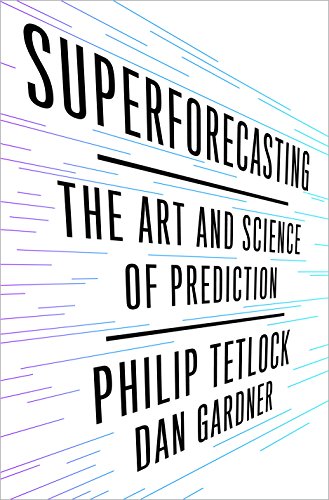How to be a Superforecaster
How to be a Superforecaster


What makes a better forecaster of future events? Well, if somebody can answer that question, it is Professor Philip Tetlock of the University of Pennsylvania.
Tetlock co-created The Good Judgement Project (GJP) which participated in a forecasting tournament held by IARPA, a U.S. government organisation.
IARPA supports research that has the potential to revolutionise intelligence analysis. The GJP won the tournament and its forecasters were 30% better than intelligence officers with access to classified info.
In his book “Superforecasting: the art and science of prediction”, he describes the portrait and methods of those top forecasters.
Besides concluding that foresight is real, Tetlock found that the key to forecasting is not what we think, but how we think:
- Foresight demands thinking that is open-minded, careful, curious, and—above all—self-critical;
- Good forecasters show a high degree of active open-mindedness, meaning that they are not merely open to reasons why a favoured possibility might be wrong but also actively look for them;
- The strongest predictor of rising into the ranks of forecasters is the degree to which one is committed to belief updating and self-improvement.
Factors most associated with foresight
- Belief updating
- Intelligence
- Knowledge
- Deliberation time
- Actively open minded
- Teams
- Training
Interestingly, Tetlock also noted in an earlier study that “subject matter expertise does not give a big boost to performance” and that “we reach the point of diminishing marginal predictive returns for knowledge disconcertingly quickly”. Investors can improve their forecasting skills by being actively open-minded and committed to self-improvement.
Admin heyokha
Share
What makes a better forecaster of future events? Well, if somebody can answer that question, it is Professor Philip Tetlock of the University of Pennsylvania.
Tetlock co-created The Good Judgement Project (GJP) which participated in a forecasting tournament held by IARPA, a U.S. government organisation.
IARPA supports research that has the potential to revolutionise intelligence analysis. The GJP won the tournament and its forecasters were 30% better than intelligence officers with access to classified info.
In his book “Superforecasting: the art and science of prediction”, he describes the portrait and methods of those top forecasters.
Besides concluding that foresight is real, Tetlock found that the key to forecasting is not what we think, but how we think:
- Foresight demands thinking that is open-minded, careful, curious, and—above all—self-critical;
- Good forecasters show a high degree of active open-mindedness, meaning that they are not merely open to reasons why a favoured possibility might be wrong but also actively look for them;
- The strongest predictor of rising into the ranks of forecasters is the degree to which one is committed to belief updating and self-improvement.
Factors most associated with foresight
- Belief updating
- Intelligence
- Knowledge
- Deliberation time
- Actively open minded
- Teams
- Training
Interestingly, Tetlock also noted in an earlier study that “subject matter expertise does not give a big boost to performance” and that “we reach the point of diminishing marginal predictive returns for knowledge disconcertingly quickly”. Investors can improve their forecasting skills by being actively open-minded and committed to self-improvement.
Admin heyokha
Share














